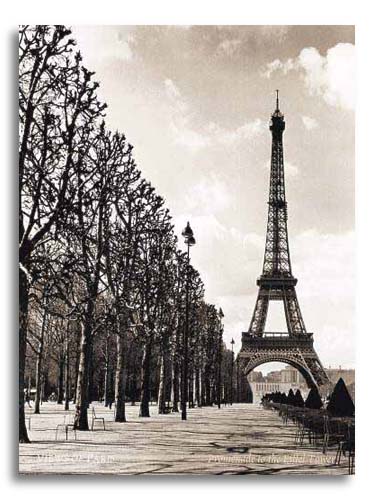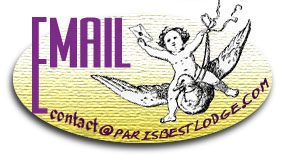
The Eiffel
Tower
Metro : Bir-Hakeim or
Trocadéro. 9h30 - 22h30.

Thanks to the visual lightness of
its structure one needs reminding of the tower’s monumental proportions
and staggering weight, 7000 tonnes of metal with a surface area
sufficient in size to mean it is constantly being repainted. Its
architect Gustave Eiffel was heard to exclaim during the Universal
Exposition of 1937, “I’ve become jealous of my own tower, it is now
more famous than I am!” However, from its birth it was clear that its
function conditioned its form, suggesting that it could have been the
wind itself that was responsible for the design.
Since then more than 150 million people have visited the Lady of Iron,
the tower becoming as representative of the City of Lights as any other
monument. An astounding feat considering just how recently she appears
in the city’s history.
Gustave Eiffel had already made a name for himself in designing the
Statue of Liberty. The conception of his famous tower in 1889 was an
architectural revelation as at the time the 300m arrow was the tallest
man-made structure in the world, its design reminiscent of spectacular
projects of times long past such as the Egyptian’s pyramids.
Not that such a grand or ambitious plan was universally applauded at
the time, quite the opposite. Its very existence was threatened from
day one by many Parisians. Some contented themselves with ridicule,
naming it the “giant metallic carrot”. Others were more militant,
committing themselves to its ultimate destruction. The writer Guy de
Maupassant humourously claimed to visit each day in order to take
refuge in the one Parisian location where the tower couldn’t be seen.
Despite such attitudes the tower fascinated the crowds at its
inauguration during the Universal Exposition of 1889. More than two
million finding their curiosity too strong to resist the urge to climb
the towers’ three levels and experience the highest view of Paris that
ever existed, a view that even took the Chartres Cathedral on a clear
day.
Like the pavilions constructed for the expositions of the day the tower
was only ever intended to last a few decades before being dismantled.
During the 1920’s, with the tower’s lease coming to an end, Eiffel took
up the fight to save his masterpiece. Curiously though, the tower was
saved not through its status as the most successful work of steel from
the industrial revolution. It was rather its more practical role as a
giant antenna that rendered it indispensable and saved it from
destruction. From the First World War onwards it proved to be a
valuable asset in the domain of radio transmissions. The tower was
involved in the interception of numerous enemy messages during that
war, allegedly being responsible for foiling the work of the infamous
spy Mata-Hari.
Today more than ever the Eiffel Tower represents a vibrant and festive
Paris. Since celebrations to mark the millennium it has been adorned
with thousands of silver lights, which bring it alive for ten minutes
at the start of each nighttime hour. This tower of lights truly the
centerpiece for the city of lights.









Absolutely not the same place than Studio
Marais , rue du Bourg-Tibourg,
Completely the other side of Paris from
Studio Sicile , rue du Roi de Sicile.










